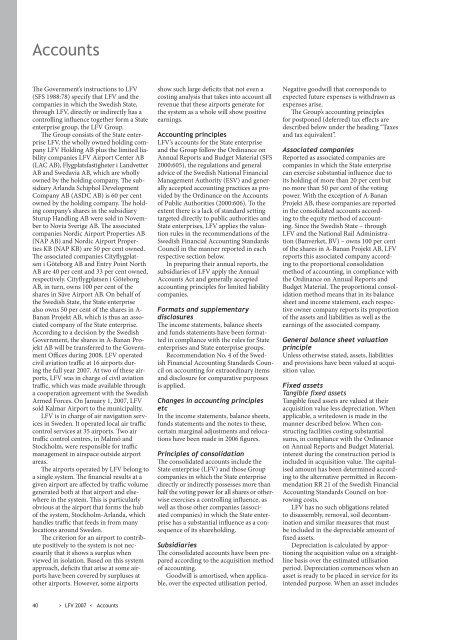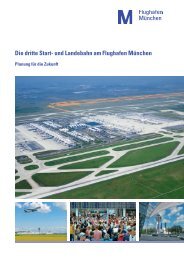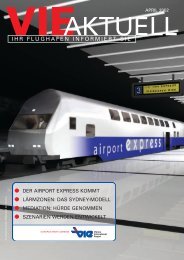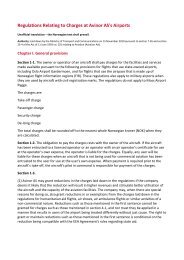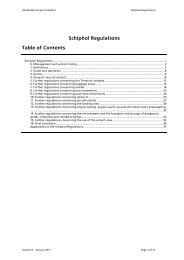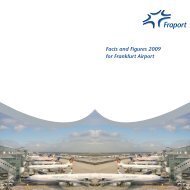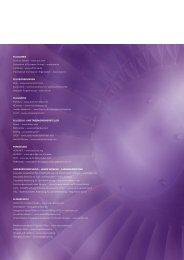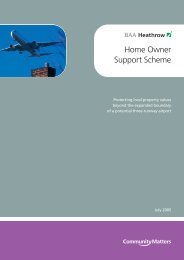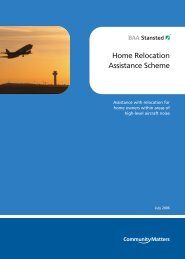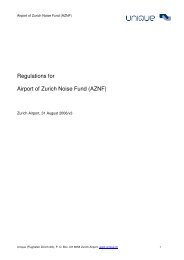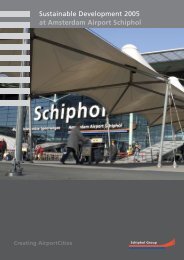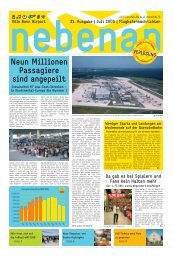The LFV Group - Airport Mediation - Home
The LFV Group - Airport Mediation - Home
The LFV Group - Airport Mediation - Home
- No tags were found...
Create successful ePaper yourself
Turn your PDF publications into a flip-book with our unique Google optimized e-Paper software.
Accounts<strong>The</strong> Government’s instructions to <strong>LFV</strong>(SFS 1988:78) specify that <strong>LFV</strong> and thecompanies in which the Swedish State,through <strong>LFV</strong>, directly or indirectly has acontrolling influence together form a Stateenterprise group, the <strong>LFV</strong> <strong>Group</strong>.<strong>The</strong> <strong>Group</strong> consists of the State enterprise<strong>LFV</strong>, the wholly owned holding company<strong>LFV</strong> Holding AB plus the limited liabilitycompanies <strong>LFV</strong> <strong>Airport</strong> Center AB(LAC AB), Flygplatsfastigheter i LandvetterAB and Swedavia AB, which are whollyowned by the holding company. <strong>The</strong> subsidiaryArlanda Schiphol DevelopmentCompany AB (ASDC AB) is 60 per centowned by the holding company. <strong>The</strong> holdingcompany’s shares in the subsidiarySturup Handling AB were sold in Novemberto Novia Sverige AB. <strong>The</strong> associatedcompanies Nordic <strong>Airport</strong> Properties AB(NAP AB) and Nordic <strong>Airport</strong> PropertiesKB (NAP KB) are 50 per cent owned.<strong>The</strong> associated companies Cityflygplatseni Göteborg AB and Entry Point NorthAB are 40 per cent and 33 per cent owned,respectively. Cityflygplatsen i GöteborgAB, in turn, owns 100 per cent of theshares in Säve <strong>Airport</strong> AB. On behalf ofthe Swedish State, the State enterprisealso owns 50 per cent of the shares in A-Banan Projekt AB, which is thus an associatedcompany of the State enterprise.According to a decision by the SwedishGovernment, the shares in A-Banan ProjektAB will be transferred to the GovernmentOffices during 2008. <strong>LFV</strong> operatedcivil aviation traffic at 16 airports duringthe full year 2007. At two of these airports,<strong>LFV</strong> was in charge of civil aviationtraffic, which was made available througha cooperation agreement with the SwedishArmed Forces. On January 1, 2007, <strong>LFV</strong>sold Kalmar <strong>Airport</strong> to the municipality.<strong>LFV</strong> is in charge of air navigation servicesin Sweden. It operated local air trafficcontrol services at 35 airports. Two airtraffic control centres, in Malmö andStockholm, were responsible for trafficmanagement in airspace outside airportareas.<strong>The</strong> airports operated by <strong>LFV</strong> belong toa single system. <strong>The</strong> financial results at agiven airport are affected by traffic volumegenerated both at that airport and elsewherein the system. This is particularlyobvious at the airport that forms the hubof the system, Stockholm-Arlanda, whichhandles traffic that feeds in from manylocations around Sweden.<strong>The</strong> criterion for an airport to contributepositively to the system is not necessarilythat it shows a surplus whenviewed in isolation. Based on this systemapproach, deficits that arise at some airportshave been covered by surpluses atother airports. However, some airportsshow such large deficits that not even acosting analysis that takes into account allrevenue that these airports generate forthe system as a whole will show positiveearnings.Accounting principles<strong>LFV</strong>’s accounts for the State enterpriseand the <strong>Group</strong> follow the Ordinance onAnnual Reports and Budget Material (SFS2000:605), the regulations and generaladvice of the Swedish National FinancialManagement Authority (ESV) and generallyaccepted accounting practices as providedby the Ordinance on the Accountsof Public Authorities (2000:606). To theextent there is a lack of standard settingtargeted directly to public authorities andState enterprises, <strong>LFV</strong> applies the valuationrules in the recommendations of theSwedish Financial Accounting StandardsCouncil in the manner reported in eachrespective section below.In preparing their annual reports, thesubsidiaries of <strong>LFV</strong> apply the AnnualAccounts Act and generally acceptedaccounting principles for limited liabilitycompanies.Formats and supplementarydisclosures<strong>The</strong> income statements, balance sheetsand funds statements have been formattedin compliance with the rules for Stateenterprises and State enterprise groups.Recommendation No. 4 of the SwedishFinancial Accounting Standards Councilon accounting for extraordinary itemsand disclosure for comparative purposesis applied.Changes in accounting principlesetcIn the income statements, balance sheets,funds statements and the notes to these,certain marginal adjustments and relocationshave been made in 2006 figures.Principles of consolidation<strong>The</strong> consolidated accounts include theState enterprise (<strong>LFV</strong>) and those <strong>Group</strong>companies in which the State enterprisedirectly or indirectly possesses more thanhalf the voting power for all shares or otherwiseexercises a controlling influence, aswell as those other companies (associatedcompanies) in which the State enterprisehas a substantial influence as a consequenceof its shareholding.Subsidiaries<strong>The</strong> consolidated accounts have been preparedaccording to the acquisition methodof accounting.Goodwill is amortised, when applicable,over the expected utilisation period.Negative goodwill that corresponds toexpected future expenses is withdrawn asexpenses arise.<strong>The</strong> <strong>Group</strong>’s accounting principlesfor postponed (deferred) tax effects aredescribed below under the heading “Taxesand tax equivalent”.Associated companiesReported as associated companies arecompanies in which the State enterprisecan exercise substantial influence due toits holding of more than 20 per cent butno more than 50 per cent of the votingpower. With the exception of A-BananProjekt AB, these companies are reportedin the consolidated accounts accordingto the equity method of accounting.Since the Swedish State – through<strong>LFV</strong> and the National Rail Administration(Banverket, BV) – owns 100 per centof the shares in A-Banan Projekt AB, <strong>LFV</strong>reports this associated company accordingto the proportional consolidationmethod of accounting, in compliance withthe Ordinance on Annual Reports andBudget Material. <strong>The</strong> proportional consolidationmethod means that in its balancesheet and income statement, each respectiveowner company reports its proportionof the assets and liabilities as well as theearnings of the associated company.General balance sheet valuationprincipleUnless otherwise stated, assets, liabilitiesand provisions have been valued at acquisitionvalue.Fixed assetsTangible fixed assetsTangible fixed assets are valued at theiracquisition value less depreciation. Whenapplicable, a writedown is made in themanner described below. When constructingfacilities costing substantialsums, in compliance with the Ordinanceon Annual Reports and Budget Material,interest during the construction period isincluded in acquisition value. <strong>The</strong> capitalisedamount has been determined accordingto the alternative permitted in RecommendationRR 21 of the Swedish FinancialAccounting Standards Council on borrowingcosts.<strong>LFV</strong> has no such obligations relatedto disassembly, removal, soil decontaminationand similar measures that mustbe included in the depreciable amount offixed assets.Depreciation is calculated by apportioningthe acquisition value on a straightlinebasis over the estimated utilisationperiod. Depreciation commences when anasset is ready to be placed in service for itsintended purpose. When an asset includes40 > <strong>LFV</strong> 2007 < Accounts


